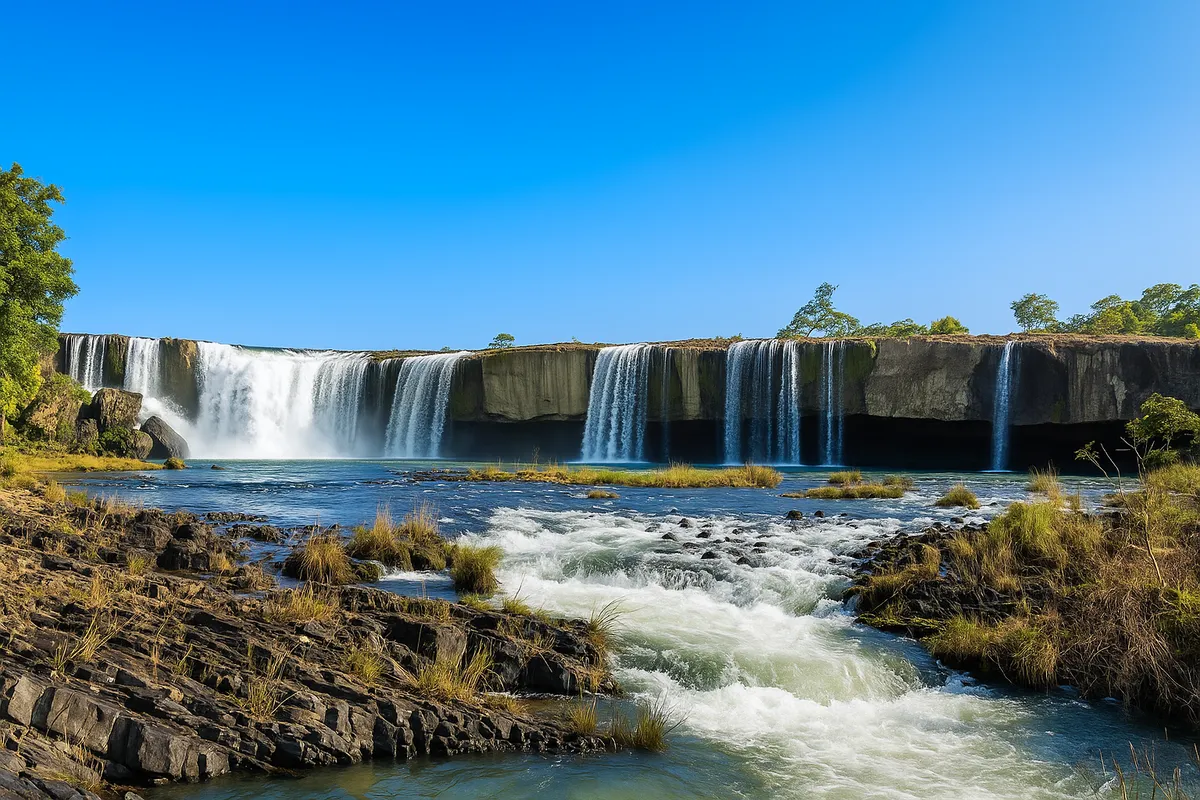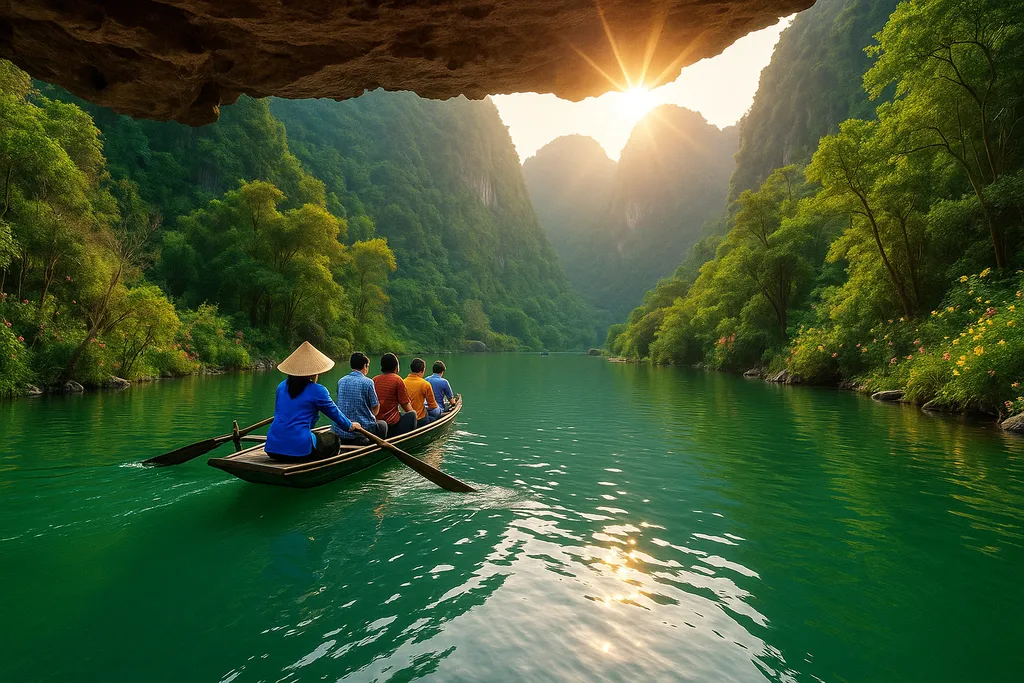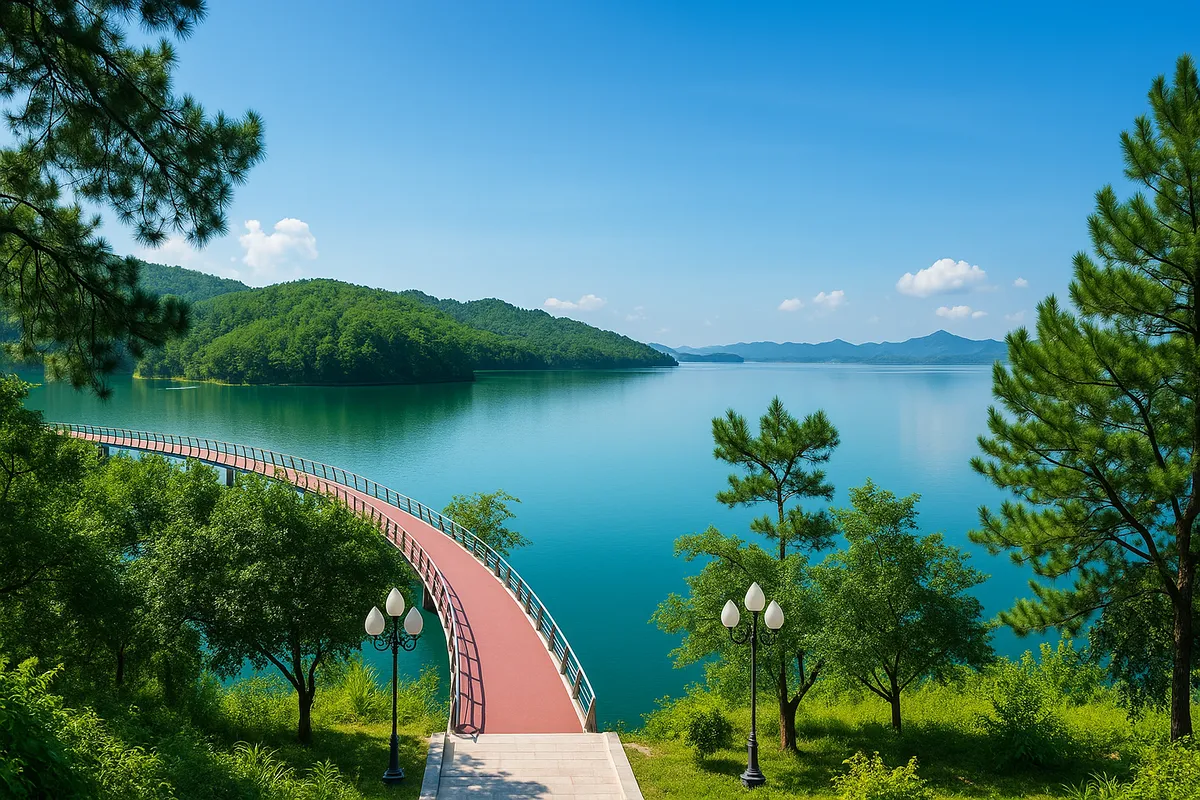Dray Nur waterfall is breathtakingly beautiful in the sunny season of the Central Highlands
- Wednesday, Jun 11, 2025, 20:15 (GMT+7)
Dray Nur waterfall is breathtakingly beautiful in the sunny season of the Central Highlands
Dray Nur Waterfall does not call with noise. It whispers. Yet its whisper is powerful enough to stir the soul of the Central Highlands. Standing amidst the echoes of the great forest, listening to the flowing water as a spontaneous symphony between rock and jungle, one loses all sense of where the present ends and legend begins.
Hidden in the borderland between Dak Lak and Dak Nong provinces, Dray Nur is the spiritual vein of the Serepok River, weaving through the primeval forest like a living silk ribbon of the sky and earth. Although located just over twenty five kilometers from Buon Ma Thuot city center, the road to Dray Nur feels like a journey far deeper than mere distance, touching the raw and profound layers of the red basalt land.
This is not just a waterfall. It is a story. A legend. A current of emotion that stretches through the collective imagination of the Ede people. According to folklore, Dray Nur was born from a tragic love. A tale of a young man and woman from two rival tribes who fell deeply in love. Unable to overcome their clans’ animosity, they fled to the Serepok River to unite. But facing fierce resistance, the river split in two, forming the Dray Nur and Dray Sap falls, as if the earth itself tore their love apart. In the Ede language, Dray Nur means female waterfall, carrying a quiet, melancholic beauty that lingers and enchants.
The water here does not fall straight down in vertical torrents. It spreads out, cascading like the flowing hair of a mountain maiden washing her locks in the forest stream. Not fierce, not thunderous, but mysteriously alluring. Below the waterfall, massive stones lie scattered like giant steps descending into the jungle’s hidden depths. The sound of falling water blends with rustling leaves, birdsong above, and the gentle breath of the wind brushing against the soul.
Behind this immense water curtain is a mysterious cave. A doorway into another world, where phones lose signal, engines fall silent, and only the voice of your own heart remains. The cave stretches over three hundred meters deep, damp and cool like the jungle’s hidden breath. Shafts of light pierce the mist, casting shimmering hues on moss-covered rock walls, creating a natural kaleidoscope. Some say stepping inside is like entering a forgotten realm from millennia past.
Surrounding the falls is a lush tropical forest, roots gripping the earth like ancient hands guarding sacred land. Many young travelers come to slow down, seeking the untouched essence of nature before it was commercialized. Photos taken at Dray Nur need no editing. The forest adjusts the light with perfect instinct. Sunbeams stream through leaves, glinting on the water like golden threads. Every frame tells a story.
During the rainy season, the falls become majestic. Waters swell like a colossal silk sheet waking from slumber. In the dry season, the waterfall softens, revealing its rock layers like the ancient skin of the earth. Many visitors choose to come from December to April, when the weather is dry and mild, ideal for exploration without dealing with slippery paths.
The journey to Dray Nur is not difficult, but it demands patience. From Buon Ma Thuot, follow Highway 14 for about twenty kilometers, then turn onto a small road shaded by rows of rubber trees. At noon, the trees cast long shadows across the path like an unfinished dream. There are no flashing billboards, no noisy tour groups. Only the wide sky of the Central Highlands and a waterfall hidden behind morning mist.
Local cuisine near the falls is not diverse but deeply rooted in the identity of the Ede and M’Nong communities. If you leave without tasting bamboo-tube rice with sesame salt and grilled stream fish, it is as if you have never been there. Occasionally, if lucky, visitors may witness traditional festivals with fire dancing and bamboo flute music echoing through the forest, a sound absent from city life.
Few know that Dray Nur is also linked to geological studies on basalt layers and underground water systems in the Central Highlands. According to scientists, the rock structure here results from millions of years of tectonic activity, forming underground passageways that connect Dray Nur and Dray Sap. Some believe these seemingly separate waterfalls are actually linked beneath the surface, like a hidden love flowing silently under layers of harsh stone.
Many photographers come to Dray Nur not for its grandeur, but for its rhythm. Each captured frame becomes the breath of the land and sky. Each glance holds a silent tremble. Words like travel to feel small and see the vastness of the universe cease to be a philosophy and become a visible truth.
Dray Nur does not try to stand out. Yet it stands out more than anywhere else. The space here is not meant for haste. People come to pause, to hear their own thoughts amid the forest’s song. A place where there is no need for internet to feel connected. A place where once you set foot, the scent of moss, the warmth of sunlight, and the sound of falling water linger in your memory forever.
Some say, if you want to hear the Central Highlands speak, come to Dray Nur at twilight. When the sun dyes the trees crimson, when shadows stretch long over the basalt rock, the waterfall becomes more than a waterfall. It becomes a trail of memory, a soul whispering to the blue sky that no matter how much the world changes, the purest beauty will always remain, quietly, deeply, unshakably.

 CHECKIN.VN
CHECKIN.VN








Share on